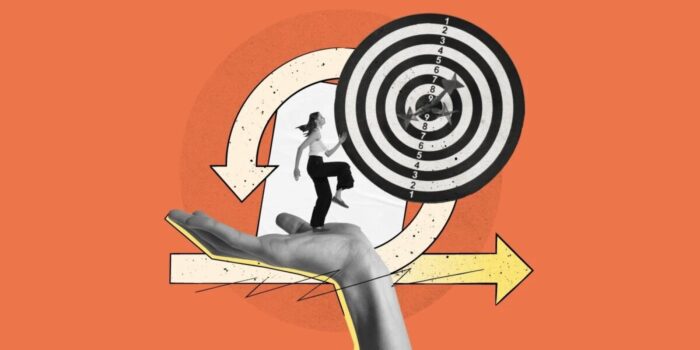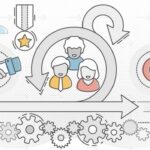In today’s rapidly evolving business environment, organizations are coming to realize the importance of agility not only in operations but also in human resources. This is where Agile HR steps in – a transformative concept that marries Agile methodology with a human-centric approach, providing a framework for HR professionals and leaders to navigate the complexities of modern workforce management.
The Concept
Agile methodology, originating from software development, has now extended its influence across industries, including human resources. Essentially, Agile is all about flexibility, collaboration, and iterative progress. By applying this practice to HR, organizations are discovering new ways to address the dynamic needs of today’s diverse workforce. As previously mentioned in my article on Agile Recruitment, this concept redefines HR practices while reshaping the employee experience.
The pillars of Agile HR are two-fold: being product-driven and human-centric.
The Product-Driven Approach
Agile HR treats HR functions as “products”, each “Agile Lab” designed to fulfill specific organizational needs – such as recruitment, onboarding, performance management, or learning and development. Just as a software product evolves through iterations, each HR Agile Lab consists of members from various HR functions (i.e., Recruitment, Talent Management, L&D, Total Rewards), operating in short cycles called “sprints,” usually lasting 1-4 weeks. During each sprint, the team focuses on specific tasks from the product backlog, ensuring regular and measurable progress. These cross-functional Lab teams work together to enhance HR products.
This product-driven approach enables HR teams to prioritize tasks that align with business goals. It ensures that HR services remain attuned with employee and organizational needs, fostering efficiency, relevance, and ongoing improvement.
The Human-Centric Mindset
While Agile HR embraces the efficiency of product-oriented thinking, it never loses sight of the human element. Traditional HR practices often struggle to meet the evolving needs of today’s diverse workforce. Agile HR can bridge this gap by placing employees at the center of its initiatives.
By understanding employees’ preferences, challenges and aspirations, and gathering regular feedback from employees, managers, and stakeholders, HR products can be tailored to create a positive employee experience, therefore leading to impactful organizational changes.
From Enterprises to Start-Ups
This methodology works across organizational scales, from global enterprises to nimble start-ups. Imagine an organization with a workforce spanning globally. The product-driven approach would involve forming cross-functional teams, with each responsible for a specific HR “product”. These teams/labs work collaboratively to define product backlogs, plan sprints, and continuously refine their deliverables based on real-time feedback. In this scenario, the human-centric aspect shines through by tailoring HR products to meet the unique needs of employees across different regions and roles.
In the start-up setting, Agile HR can respond promptly to various demands. It aligns perfectly with the fast pace of start-ups, ensuring HR practices are synced with the rapid growth and talent demands.
Agile HR: New Era of HR
The Agile HR concept is an innovative shift in how organizations approach human resources. By applying a product-driven orientation with a human-centric mindset, companies can achieve both goals of adaptability and employee wellbeing. It will empower HR to be more responsive and innovative.




